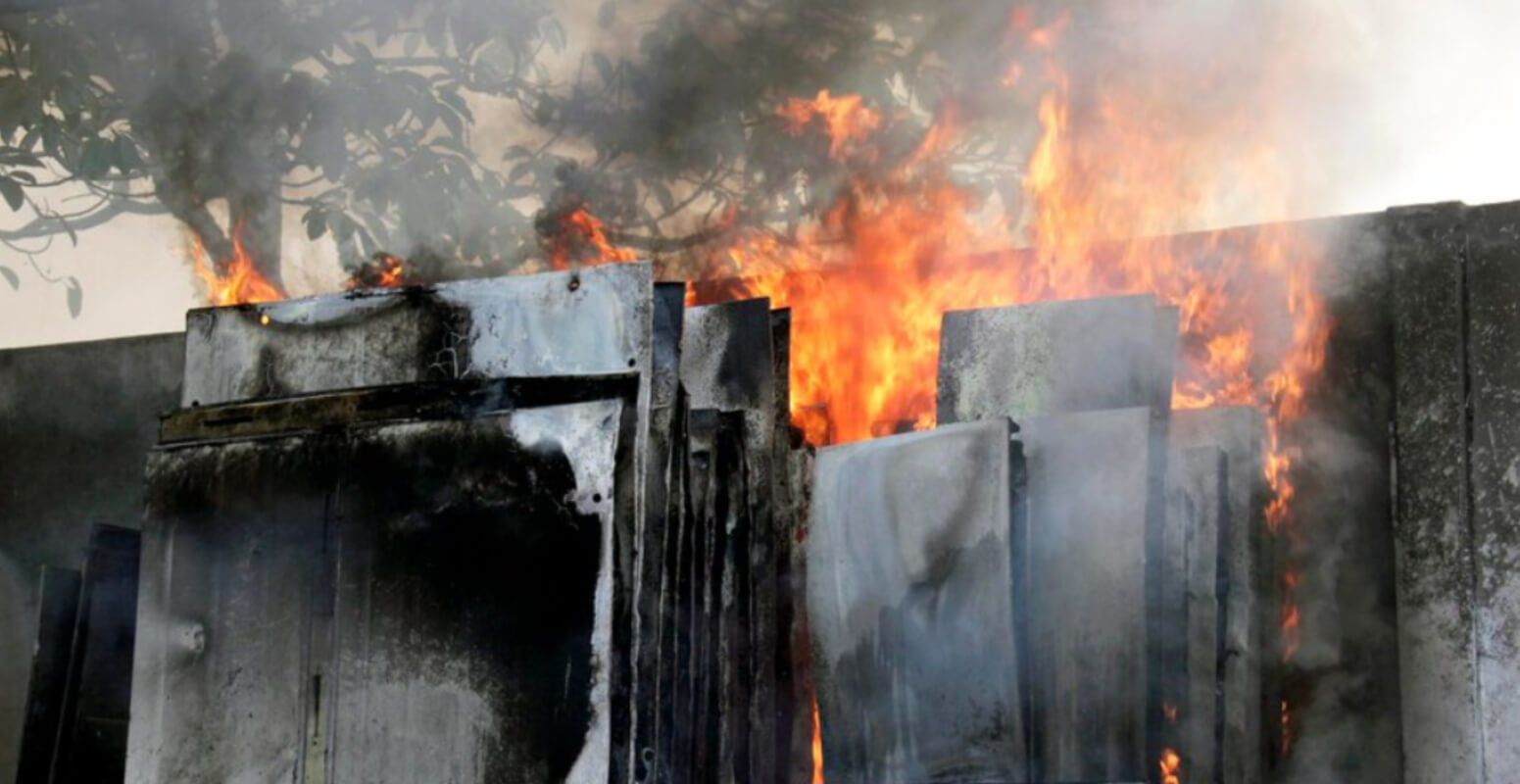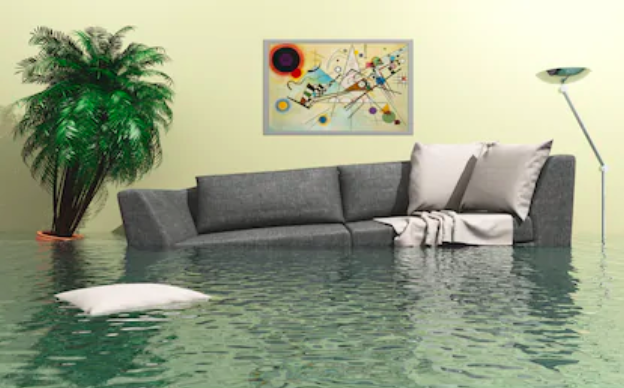It usually starts with a small stain—just a faint brown spot that seems harmless at first. Maybe you chalk it up to an old leak that already dried, or maybe you try to cover it with paint. But before long, the spot spreads, bubbles form, and eventually, sections of your ceiling begin to sag or crumble. That’s when most homeowners realize: ceiling water damage repair isn’t as simple as it seems.
At Stanley Restoration, we’ve responded to hundreds of ceiling water damage jobs across the Dallas–Fort Worth area. And nearly every time, we’ve seen the same pattern: homeowners doing their best to fix it themselves, only to miss the deeper problems hiding just behind the surface. In this blog, we’ll break down what most DIY approaches overlook, why the damage runs deeper than you think, and how a professional response protects more than just your ceiling—it protects your home’s entire structure and safety.
The Ceiling Is the Symptom, Not the Source
The biggest mistake homeowners make is assuming the visible damage is the whole problem. But ceilings are often the last place water shows up—meaning the leak has been active for some time before you see it. In many cases, the origin is a slow pipe leak in the attic, a roof storm damage repair issue, or even a hidden appliance leak cleanup problem from an upstairs unit. Painting over stains or patching up sagging drywall won’t stop water from finding a new path.
When our team investigates a water line break, we track moisture far beyond the damaged ceiling. Water can migrate laterally along joists, drip into walls, or even pool under insulation. Without professional diagnostics like thermal imaging or moisture meters, it’s easy to miss what’s really going on.
Mold Doesn’t Wait for a Second Chance
When homeowners delay calling in experts for emergency water damage repair, the most common issue we uncover is microbial growth—aka mold. Moisture trapped inside drywall, insulation, and ceiling cavities becomes a perfect breeding ground for spores. Even if your ceiling looks dry, the environment inside may still be dangerously wet.
The real concern isn’t just the mold itself, but how it impacts air quality. Mold spores from ceiling voids often get pulled into the HVAC system, which then recirculates contaminated air throughout the house. That’s why structural drying services are so important. It’s not enough to remove visible water; we extract humidity from the materials that hold it.
Electrical Hazards You Can’t See
One often-overlooked danger of ceiling leaks is the potential impact on your home’s electrical system. Wiring in ceilings and attics may be compromised by water, even if no immediate short circuit is visible. In worst-case scenarios, wet insulation around wires can create serious fire hazards.
Stanley’s technicians always inspect for electrical exposure as part of water damage cleanup assessments. We work closely with licensed electricians when needed, ensuring your repair doesn’t just restore drywall—it makes your home safe again.
The Limitations of Surface Repairs
A common DIY fix is to cut out a section of damaged drywall and patch it over. While this can look fine short-term, it often leads to bigger problems. Here’s why:
- Water often extends beyond the visibly damaged area
- Structural wood beams may be weakened or warped
- Insulation may need replacing due to saturation
- Hidden mold colonies can be missed behind patch jobs
Without professional flood damage cleanup protocols—including containment, sanitation, and drying—homeowners risk restoring a space that’s still structurally compromised.
The Ceiling May Not Be Your Only Problem
In multi-story homes, ceiling leaks often signal larger systemic issues. A shower & tub overflow, for example, might leak into the floor cavity and then appear in the ceiling below. Or a toilet overflow cleanup might cause hidden seepage into subfloors and walls. The point is, if water is showing up on your ceiling, it’s probably impacting more than just one room.
This is especially true with second-story laundry setups. We’ve seen countless cases where a slow kitchen sink overflow or washing machine line leak went unnoticed until the ceiling downstairs gave out. That’s why our pipe leak cleanup service always includes a top-to-bottom inspection—even when the damage seems contained.
When the Leak Is Storm-Related
Here in Texas, we see plenty of severe weather, which means a ceiling leak might be storm-related. Heavy wind, hail, or flying debris can lead to small breaches in roofing materials—often hard to detect without a roof-level inspection.
In these cases, homeowners dealing with storm and wind damage cleanup must treat ceiling stains as a structural red flag. If roof damage is left unaddressed, repeated leaks will continue to cause new ceiling damage, often in new locations each time.
Stanley’s teams offer complete storm damage restoration, which includes identifying roof entry points, sealing them, and restoring ceiling integrity below. We’ve even helped clients with fallen tree removal from roof structures and rebuilding entire attic sections compromised during a storm.
Can’t I Just Cut Out the Wet Part and Dry It?
Technically, yes—but the keyword is just. Cutting out the wet part of the ceiling isn’t a complete fix if you haven’t done water extraction & removal, isolated the moisture source, and confirmed structural drying. Worse, drying only the ceiling while ignoring wet insulation, rafters, or electrical boxes can set you up for a repeat incident.
Drywall is cheap to replace. Rafters and trusses are not. That’s why we use commercial-grade air movers, dehumidifiers, and emergency water removal equipment to ensure the entire system is dry—not just what you can touch.
What About the Smell?
Even after DIYers patch their ceilings, many still complain of a lingering musty or smoky smell. That’s because odor particles remain trapped in materials unless treated professionally. Stanley’s smoke odor removal process is often needed even when there wasn’t a fire—just persistent humidity or contamination from a neighboring fire damage cleanup.
Odors that cling to ceilings often indicate there’s still hidden moisture or material breakdown behind the surface. We tackle this with odor-neutralizing agents, HEPA filtration, and targeted smoke cleanup services when needed.
Why Professional Help Pays Off
It’s not about how skilled you are with tools—it’s about how complete the solution is. DIY ceiling repair might stop the symptom, but unless you resolve the main water line break, the HVAC discharge line repair, or the burst pipe damage cleanup that caused it, the issue will return.
With Stanley Restoration, our crews handle everything from leak detection and bathroom sink overflow cleanup to total residential flood restoration. We even offer contents restoration services if your belongings have been impacted. We’re trained to identify issues you can’t see and restore what matters most, safely and completely.
Ready for the Ceiling to Be a Ceiling Again?
You shouldn’t have to worry about your ceiling caving in—or worse, hiding a health hazard above your head. At Stanley Restoration, we respond quickly, restore fully, and always put safety first.
Whether you’ve discovered a ceiling stain or are knee-deep in flash flood damage repair, we’re here to help—from water damaged contents recovery to full structural rebuilds.

 Get To Know Us
Get To Know Us








 We Offer Financing
We Offer Financing



